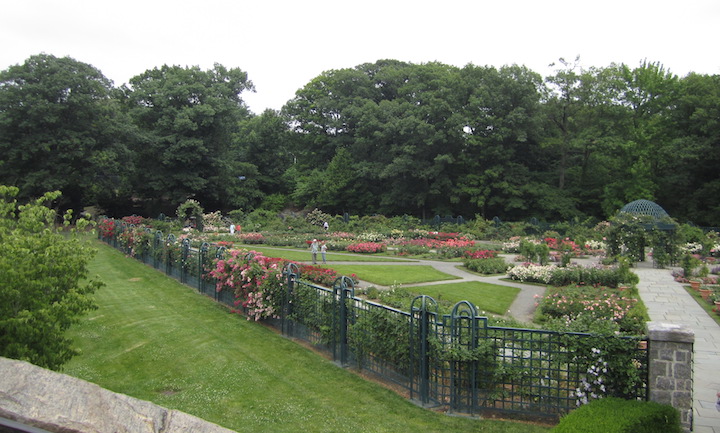
Since I am not a careful researcher, I don’t take note of where I come upon a particular reference. That’s why I have no idea what led me to a brief piece in The Archives of Natural History by David E. Allen (2004) entitled “An 1861 Instance of ‘Painting One’s Bentham.’” The Bentham in question was George Bentham, the British botanist and author of Handbook of the British Flora, first published in 1858. Though not illustrated, it was well-received by the audience he was targeting: those who were interested in identifying plants but didn’t have a strong botanical background. Besides clear descriptions, the book had a useful introduction, listed common names before Latin ones, and had an easy-to-use key, which hadn’t been available earlier for British plants.
Professional botanists, on the other hand, had several complaints about the work. First, those who liked precise demarcations among species (termed “splitters”) were displeased with Bentham’s tendency to ignore small distinctions within what he considered a single species. He was a “lumper” as was Joseph Dalton Hooker, his associate at the Royal Botanic Gardens, Kew. In addition, his critics were not impressed with Bentham’s knowledge of the British flora. He had spent most of his youth and did most of his early botanizing on the European continent, and later did little collecting in Britain. He relied on herbarium specimens and that was seen as a weakness. Even the common names he cited were considered odd, since he used the rather eccentric terminology of John Stevens Henslow.
Despite this, sales of Bentham’s first edition were so strong that the publisher suggested a second, revised edition with the addition of illustrations. These were done in black and white by the distinguished botanical illustrator Walter Hood Fitch. This version, printed in two volumes, went through a series of editions into the 20th century, with the last revisions done by Joseph Hooker after Bentham’s death. The Fitch drawings were so clear and the paper good enough that many users took to coloring in the images of the species they encountered, and also adding notes on where and when they saw the plants. This became known as “painting one’s Bentham.” David E. Allen (2003) writes that it isn’t clear when this practice began, but “it was known to have a wide following among debutantes in the 1920s.” (p. 230). He goes on to note that the practice “broadly coincided with the onset of the revulsion against collecting for herbaria.” (p. 230). He doesn’t comment on the reason for the revulsion, though by that time the entire natural history collecting craze of the 19th century was over. It was definitely easier to fill in drawings, than collect plants, get them safely home and then press, dry, and mount them. There was also the issue of what to do with stacks of pressed plants, when relatively the same information could be kept in a book one already owned, with the collection data, description, and image all on the same page.
Allen followed up this article with the brief one I cited at the beginning of this post where he reports on a case of “coloring one’s Bentham” in the original unillustrated edition, a copy owned by Elizabeth Hood who lived on the Isle of Wight. For example, in the margins of the entry for Gentiana campestris (now Gentianella campestris) she added a watercolor of the plant in flower, noting the date and place of collection on the island. She created many other drawings throughout the book, doing a skilled job of fitting them into the one-inch margins. Allen argues that noting the collecting information is what makes it like a herbarium, rather than just an illustrated field guide. He also refers to other examples of artistic of additions in books including the heavily illustrated copy of James Edward Smith’s three-volume Flora Britannica (1800-1804) with watercolors by its first owner the Rev. Richard Dreyer. It is now in the Linnean Society’s Library. William Jackson Hooker added 235 moss paintings to his copy of Dawson Turner’s Muscologiae hibernicae spicilegium (1804). This work is illustrated, but with only 16 plates, which clearly Hooker thought was insufficient. I am sure there are many other examples where botanists did not consider the descriptions adequate to nailing down the relevant attributes of a species.
What particularly interested me about “coloring one’s Bentham” is that it speaks to a present-day phenomenon, so it’s another reminder that there is nothing much new under the sun. In the past few years there has been a fad in coloring books for adults as a way to relax, relieve stress with meditative filling in, and create nice colored pictures. The Biodiversity Heritage Library has contributed to the interest by organizing “Color Our Collections” projects with several member libraries. This trend got a boost during the covid pandemic when everyone was looking for easy-to-access activities. Recently, a number of herbaria, including those at Michigan State University and the Manchester Museum, have also created web-based coloring projects, examples of broadening outreach to non-botanists and enticing younger audiences. Perhaps this will begin a trend countering the one of the early 20th-century: people may begin to see coloring plant images as inadequate and go back to collecting specimens, or at least taking photos and recording their observations in iNaturalist or a similar app: natural history in the ascendency once again.
References
Allen, D. E. (2003). George Bentham’s Handbook of the British Flora: From controversy to cult. Archives of Natural History, 30(2), 224–236. https://doi.org/10.3366/anh.2003.30.2.224
Allen, D. E. (2004). An 1861 instance of “painting one’s Bentham.” Archives of Natural History, 31(2), 356–357. https://doi.org/10.3366/anh.2004.31.2.356





